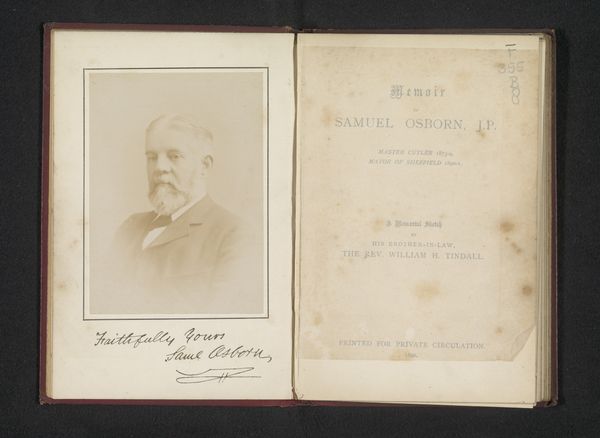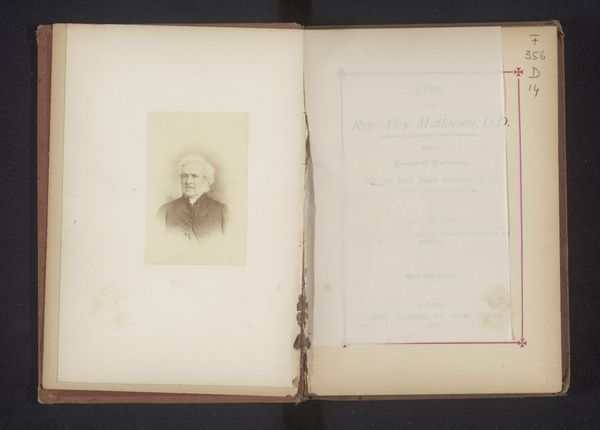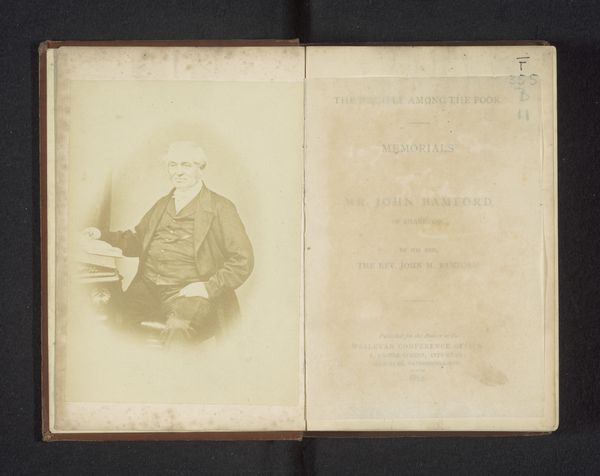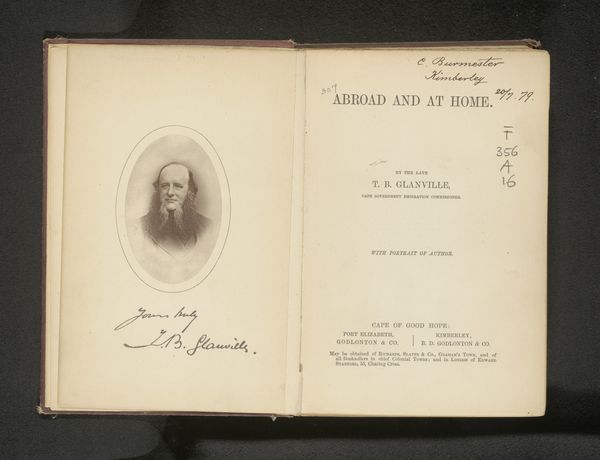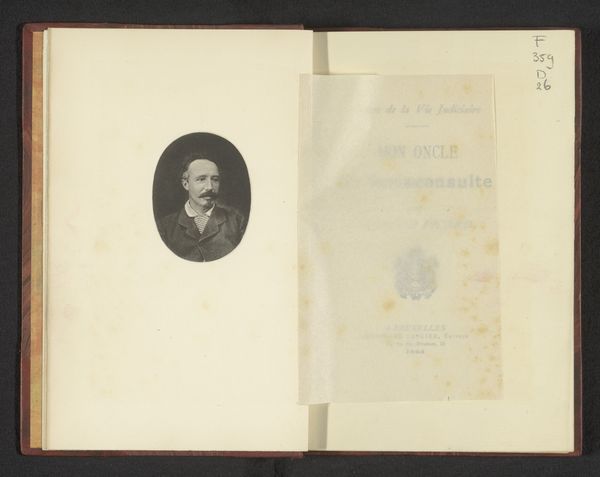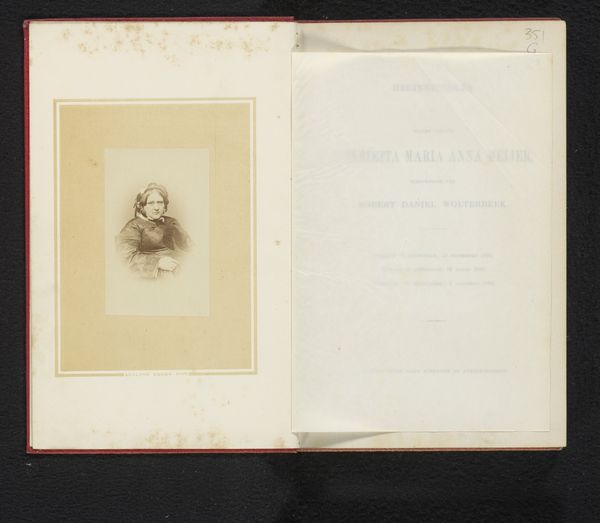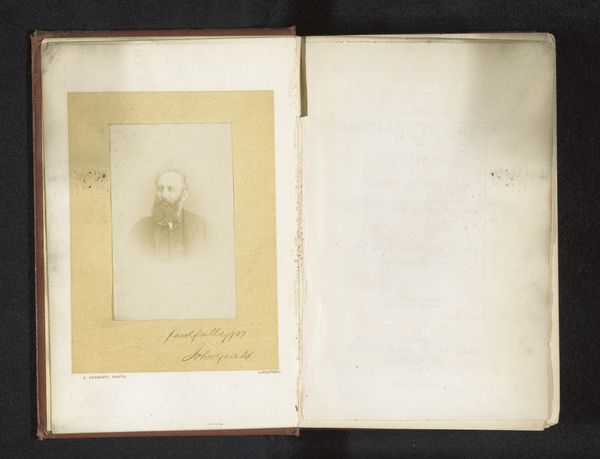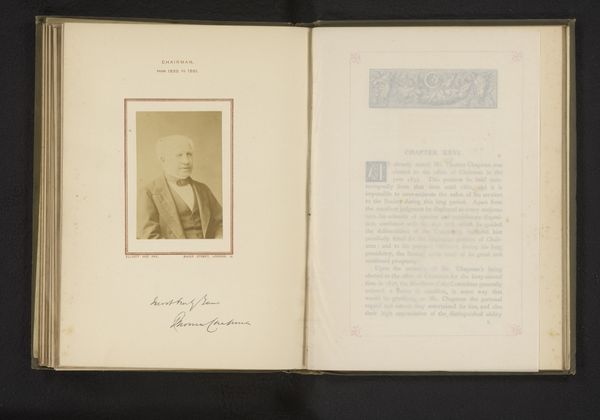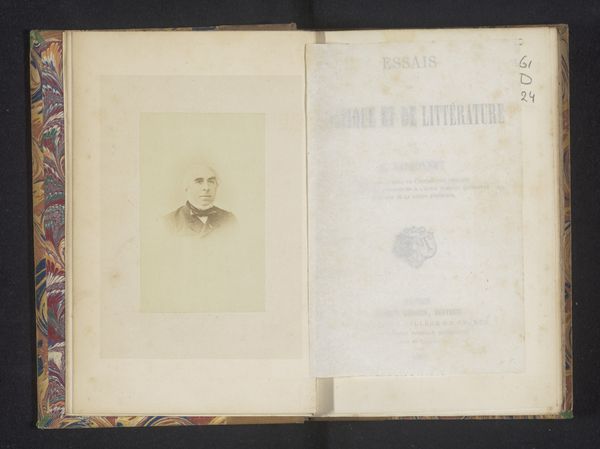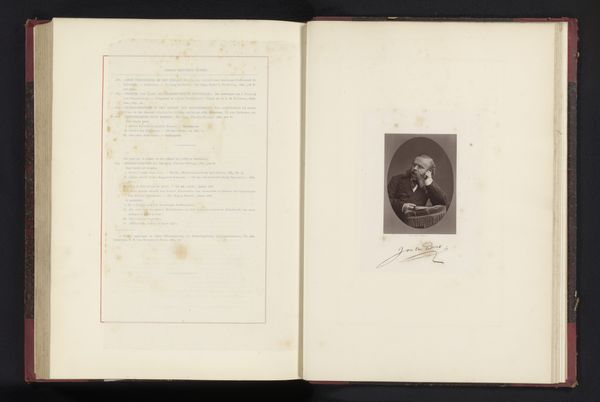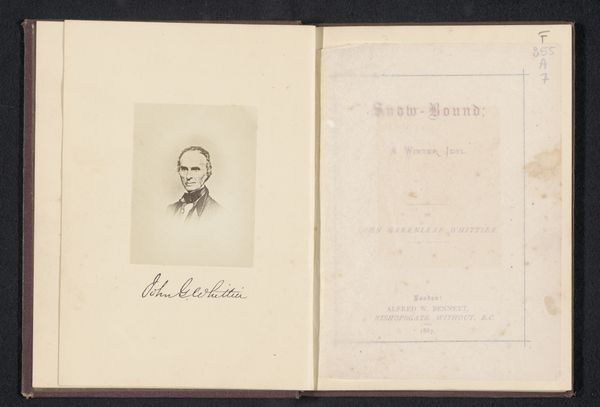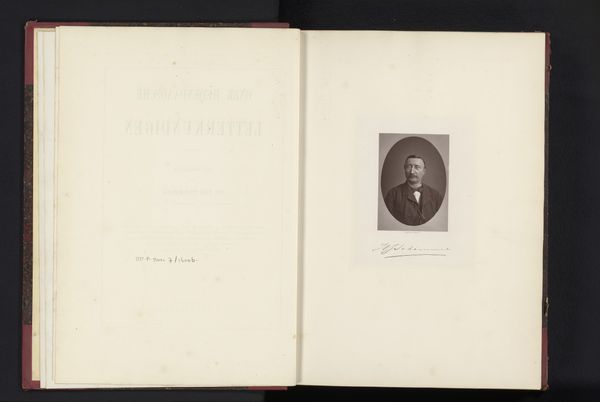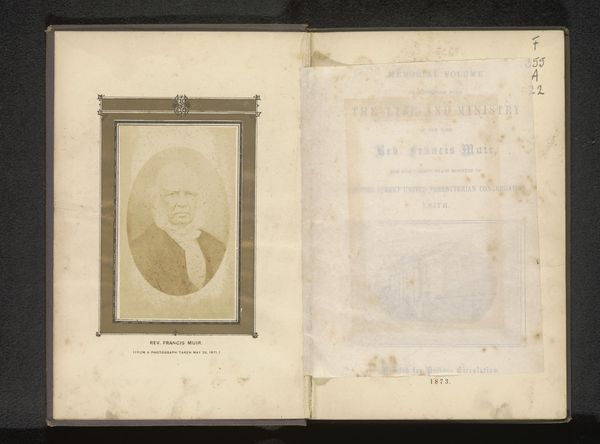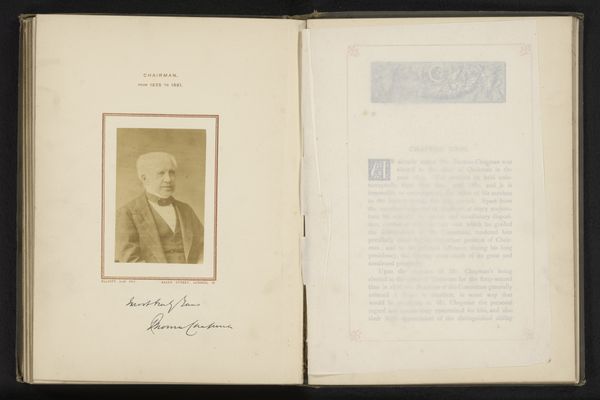
Memoir of Samuel Osborn, J.P., master cutler 1873-4, mayor of Sheffield 1890-1 1892
0:00
0:00
print, photography
#
portrait
#
still-life-photography
# print
#
photography
#
realism
Dimensions: height 190 mm, width 125 mm, thickness 10 mm
Copyright: Rijks Museum: Open Domain
Curator: This is an interesting photograph, capturing an open book. On the left is a portrait print of Samuel Osborn; on the right, we see the title page of his memoir, printed in 1892. Editor: It evokes a very personal and intimate feeling, seeing this memorial displayed in this way. There’s something very touching in how it lays open. The almost ghostly portrait facing the story of his life... Curator: Portraits placed within published books often held significance. Images, particularly photographs, served as mnemonic devices to solidify memories of the deceased. There is also an assertion of permanence that photography as a medium introduced. Editor: The contrast between the rigid, almost formal language used in the title—designating Osborn as “Master Cutler,” “Mayor of Sheffield,” — and then that handwritten "Faithfully Yours" inscription beneath his portrait. It really personalizes the whole narrative. It makes me consider how powerful these kinds of curated narratives could be for creating legacy and collective memory, even when circulated privately, like this one apparently was. Curator: That signature adds a layer, doesn't it? Consider the book's original audience. The private printing suggests it was for family or close associates, meaning they understood his social standing while also having intimate relationships with the man himself. His image could also function as an icon of success in Sheffield. Editor: Exactly. And the use of "memoir" itself speaks to constructing an idealized version of a life. Looking through the lens of our current sociopolitical understanding, this work reminds me to ask: whose stories get preserved, and who does the remembering benefit? What is the class context here? The choice of printing this as opposed to a monument reveals the politics of representation, power and even mourning practices in late 19th century Sheffield. Curator: I see that, and how you can analyze the text around that signature and photograph. It encourages us to examine our cultural fascination with memory and how it's constructed through these potent visual symbols. The act of looking back has so many complexities embedded within it. Editor: Absolutely. I’ll be contemplating this memoir and its story for quite some time. It shows me the way that collective and even personal memory always has cultural frameworks at work.
Comments
No comments
Be the first to comment and join the conversation on the ultimate creative platform.
